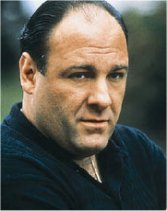March 2002
ACRO-nyms
By Michael J. Katin, MD
"What's in a name?" Romeo and Juliet, act ii, scene 2
It remains unclear as to whether recent concern about diminishing reimbursement for cancer treatment will lead to a new era of cooperation between the specialties of radiation oncology and medical oncology to try to settle their differences and work together for the good of the patient, or to turn on each other like rats in a cage. Ironically, having the patient undergo radiation therapy may seem more appealing when you're a medical oncologist working in a capitated system, and vice versa. If we take the optimistic approach that the outcome may wind up being a new sense of siblinghood, it might be good to start eliminating causes of antagonism.
Several of these come to mind instantly but one may be on the verge of resolving itself. This would be the jealousy the traditional radiation oncologist would have of medical oncologists for having cornered the market on nifty treatment names and abbreviations.
The previous generations of radiation oncologists (then known as radiation therapists) had in their armamentarium orthovoltage, cobalt therapy, radium needles, and then linear accelerators. "Orthovoltage" was a term probably nonrecognizable to the average person, who would probably think it had something to do with buying Christmas tree lights. "Cobalt" and "radium" had the connotation of unleashing force able to burn through steel and flesh, hardly consumer-friendly. Even during the early days of medical oncology, however, it was recognized that you had to have treatments with name recognition by patients and physicians, and ideally give you an idea about what they were supposed to accomplish.
The simplest examples may be MOPP, what you wanted to do to Hodgkin's disease, and CHOP, what you wanted to do with non-Hodgkin's lymphomas. This sometimes took some ingenuity, such as using "oncovin" instead of "vincristine" in order to create a vowel. Of course, there would be no validity to the idea that many combinations were devised to come up with names that sounded good rather than due to rigorous scientific analysis of drug synergism. Thus evolved the cousins CYVADIC and CYVADAC, and our all-time favorites, when you really want to show you want to kill lymphoma, ProMACE-CytaBOM and COP BLAM.
This approach also involved giving memorable names to single agents and even adjunct medications. Sodium 2-mercaptoethane sulfonate could have been called "sodium 2-mercaptoethane sulfonate," but "Mesna" was easier to remember (unless you were a dyslexic trying to join an organization for geniuses). Sometimes the naming backfired. "Carmustine" was not as slick as "BCNU" but at least didn't give the connotation of saying good-bye. But no one has ever matched the simplicity of "Flomax."
In the meantime, the best that radiation oncology was able to come up with was "linear accelerator" or "linac" if you wanted to go wild. The question was, what exactly did it do that had to do with therapy? Or was it a way to speed up lines at the supermarket?
And then we really went wild with "3-dimensional conformal therapy." The patients didn't exactly line up around the block for that one. It was then that the veil was lifted from our senses and it was obvious that we had to compete for the attention of the public. And suddenly patients were actually asking their primary physicians for things we, not the medical oncologists, could deliver. Was it due to the increasing awareness of prostate brachytherapy, in which you could get Theraseeds, Oncoseeds, IoGold seeds, Brachyseeds, and Echoseeds? Or did it have to do with the radiosurgery choices of the X-Knife, Gamma Knife, or Cyber Knife, which seem odd since the whole purpose was to avoid using a knife. And now patients come in expecting to have a BAT used during prostate treatment, with the name recognition getting to the point that many people in our specialty can't reverse gear to tell you what the letters stand for (bilateral assisted tomography?) And you still have to be careful that the name sounds positive. With great apologies to the developers, I would guess that most people would think "SCIM" radiation therapy sounds like something superficial rather than definitive.
Even our organizations have recognized this. "ASTR" was not obviously pronouncable but "ASTRO" is a stroke of genius. And I think there's no question that the American Endocurietherapy Society made tremendous progress when it switched from "AES," which sounds like a Southerner describing a part of the body, to become the Anerican Brachytherapy Society, aka the legendary "ABS." ACRO had a good name to start with and it even lends itself to interesting derivatives (e.g. ACROphobia, ACROmegaly, etc.).
Now that patients are coming to the office asking for IMRT (how can you not want to be treated with a SmartBeam), wanting to have Peacocks to go with their BATS, and demanding to get planned on an ACQSIM, it can be concluded that we have definitely closed, if not demolished, the name gap.
Or, as Tony Soprano might say, "CytaBOM....CytaBING."
email: mkatin@radiotherapy.com
